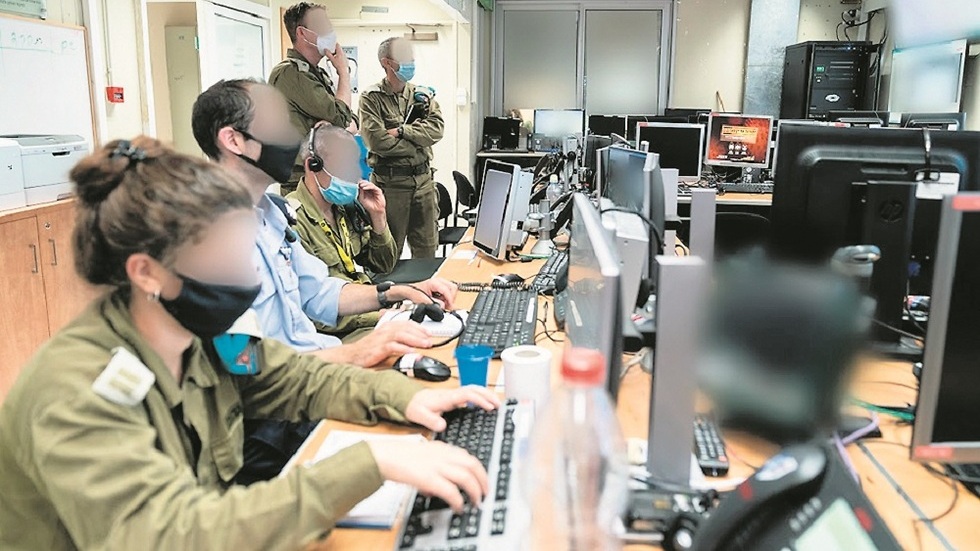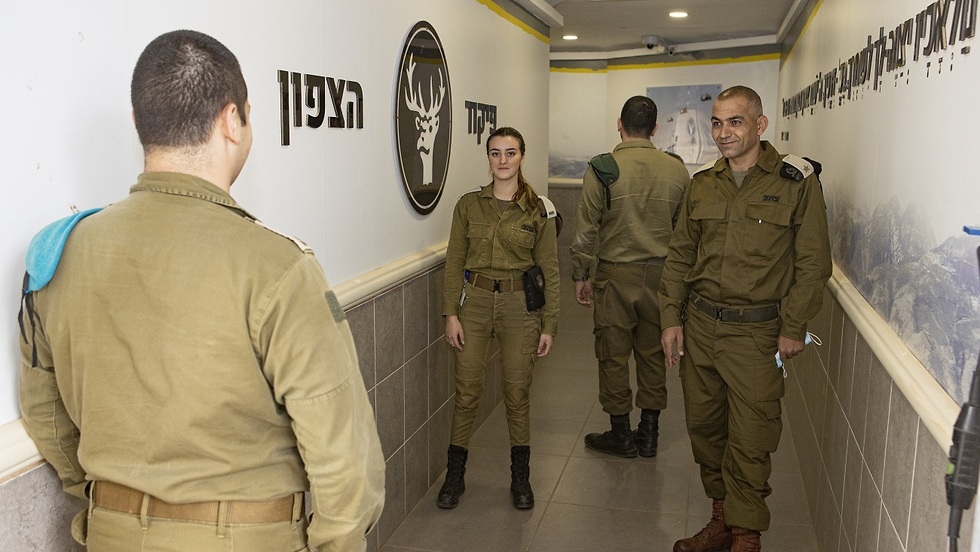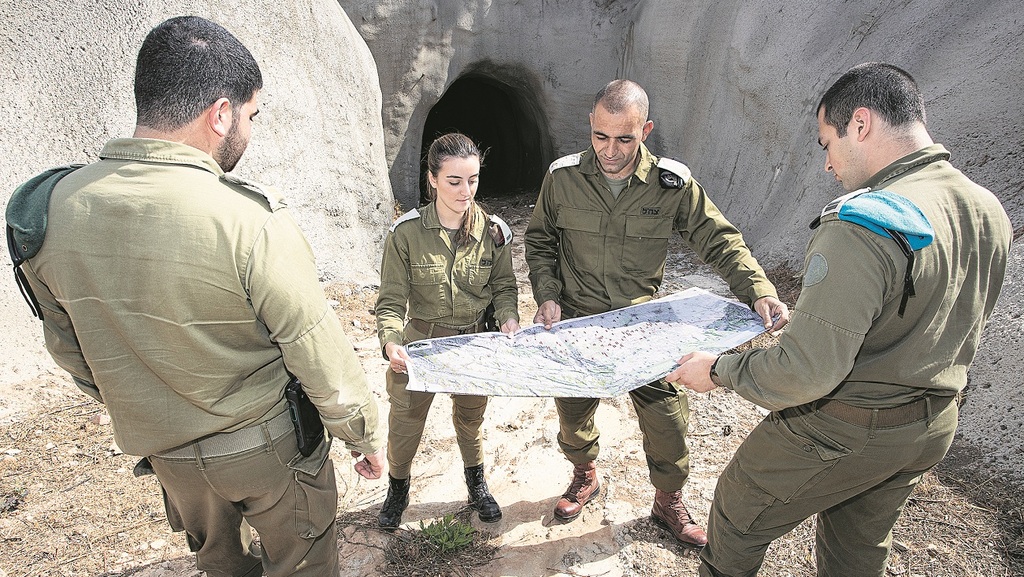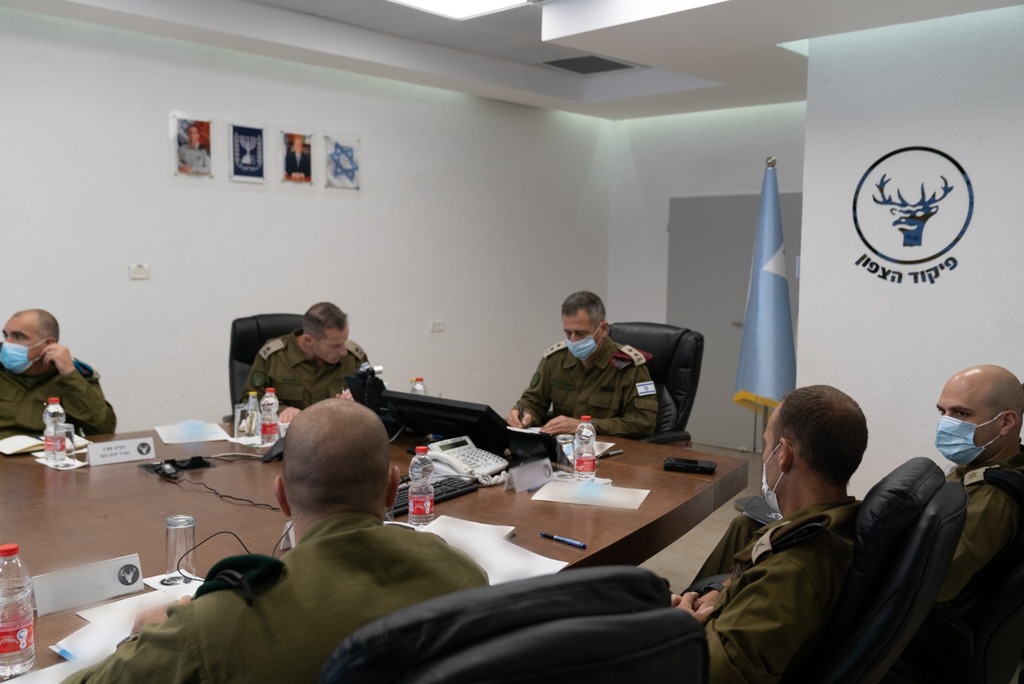Twisting underground halls and passageways that go on for dozens of kilometers, a synagogue, a market store, and a lone phone line to connect soldiers to the outside world hanging on a concrete wall - welcome to the IDF Northern Command’s secret underground bunker.
The bunker, located dozens of meters underground for maximum safety, can best be described as a massive concrete-studded city from which the IDF manages its unceasing fight against the Hezbollah terrorist organization in southern Lebanon.
The IDF has been on high alert along the northern border for more than 100 days, but July 28 was undoubtedly the most tense day yet.
On that day, Israeli intelligence warned of an intention to carry out an attack against IDF soldiers in the area of Mount Dov (also known as Shebaa Farms), where the Israeli side of the Golan Heights meets Lebanon and Syria.
Shortly after the warning was received, several Hezbollah operatives were spotted on the Lebanese side of the mountain, making their way slowly towards the Israeli side through a steep and overgrown area.
The Northern Command bunker lit up. Senior officers led by GOC Northern Command Maj. Gen. Amir Baram, gathered in the bunker’s neon lit, computer lined situation room.
"It was a crazy incident," says Lieutenant G., who served as the operations officer during the incident.
“We called images of the crawling terrorists on the screens, showing several different angles in real time. We began to get a clear idea of the best way to to strike at them, and it was evident that it would not be complicated to take them out. But that was the easy part.”
The hard part, says Lieutenant G. was deciding whether to strike at the armed terrorists at all.
"The question was whether it was worth it for us to bring down this terrorist group and risk retaliation by Hezbollah in the form of missile barrages aimed at Israel’s north, which then in turn could lead to a far more intense round of fighting.”
The final decision was to wait patiently until the squad crossed the Blue Line border between Israel and Lebanon, and only then to respond in a measured way that would only wound the terrorists.
The IDF reaction worked, and the wounded group of would-be attackers limped back into Lebanon as the bunker’s senior officers looked on intently from the underground situation room.
"There have been investigations into this incident and opinions differ widely on the correct response," says G. "But if the Northern Command's ultimate goal is to maintain the quiet, then it was probably the right decision."
Since the killing of a Hezbollah operative in Syria in an attack attributed to Israel, the organization has been trying to exact revenge.
The Shiite terrorist organization realized that the ideal way to do this was by using a sniper to kill an IDF soldier, so that there would be a balance of casualties between the two adversaries.
The IDF, meanwhile, has shown to have a military and technological edge against the terrorist organization, which thus far has failed to make good on its threat of revenge.
Behind the IDF success in countering the Hezbollah threat are dozens of officers and soldiers who rarely venture out of the bunker, which is the control and nerve center of the hottest sector in the Middle East.
From inside, the troops can operate without interruption even under massive shelling or an attack with unconventional weapons.
“I haven’t seen the light of day in a while,” says G. ”It’s surreal. But if we must contend with discomfort so the country can sleep easy at night, so be it.”
No one is sure exactly how long the alert in the north will last. Even intelligence officer, Captain E., who heads of the Lebanese branch of the Northern Command, cannot give an accurate estimate.
E. is responsible for deciphering Hezbollah’s plans and daily routines, but ironically it's when he goes home to his kibbutz in the Gaza border that E. is closest to the line of fire.
"I live in Kibbutz Kfar Aza,” E. says. "Two weeks ago I went home and as soon as I opened the front door I heard rocket sirens blaring. When you grow up and live like this, it gives you the drive to save human lives.”





